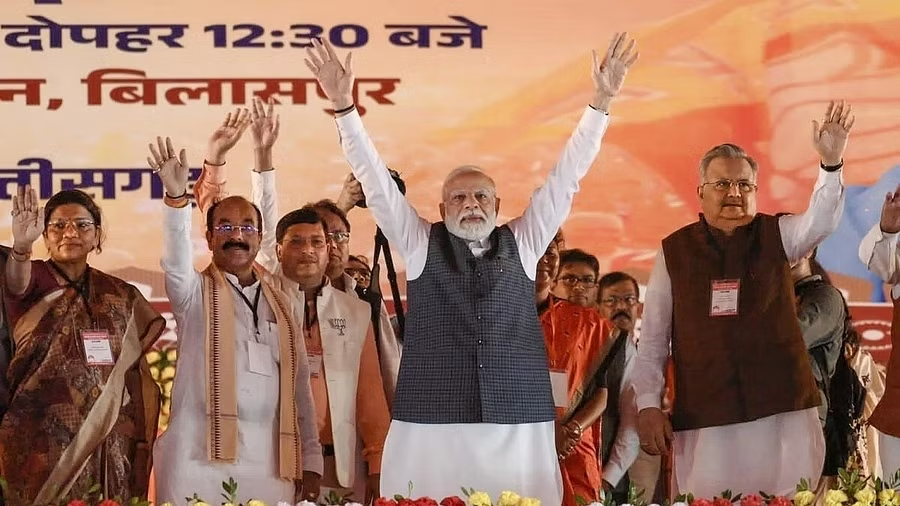The naamdar (privileged) vs kaamdar (working class) debate is an old one, which regained traction in the run-up to the 2014 Lok Sabha polls. Prime Minister Narendra Modi, then Gujarat Chief Minister and the Bharatiya Janata Party (BJP)’s prime ministerial candidate, knew early on during his campaign that the underdog card when played well always garnered more sympathy, and votes. Of course, the infamous ‘chaiwallah’ jibe worked in highlighting this chasm, and worked in Modi’s favour.
While, over the last nine years, this debate might have lost its edge — with the Opposition breaking the divide and reaching out to the aam aadmi, like Congress leader Rahul Gandhi’s Bharat Jodo Yatra, and Modi himself leading India at the global high table — the underlying class war still holds. This will become evident, and the rhetoric will intensify as the general elections draw closer.
Indian society is intrinsically classist, with entrenched prejudice based on social class. This hierarchy is evident, and wealth, education, and geography serve as subtle markers; for example, the clear distinction between the English-medium educated privileged class and those who finished their education in their mother tongue. In this milieu, any change in the social order is difficult and will be resisted.
Let’s look at three areas that have seen the social order change over the decades: cricket, business, and, of course, politics.
Levelling the pitch
Indian cricket of the early 20th century was dominated by royalty: Duleepsinhji of Nawanagar, KS Ranjitsinhji, the Maharajakumar of Vizianagaram — each of whom lent their names to the Duleep, Ranji and Vizzy trophies — and the Nawabs of Pataudi Sr and Jr. India’s captain in its first tour of England was led by the Maharaja of Porbandar. Then of course, there were the wealthy Indians like the late Vijay Merchant who came from a leading industrial family.
The 1970s and 1980s saw middle-class India make its mark from the maidans of Mumbai to the playfields of Bangalore and Delhi — with Sunil Gavaskar, Dilip Vengsarkar, Ravi Shastri, Gundappa Vishwanath, Amarnath brothers and later Sachin Tendulkar, Rahul Dravid, Anil Kumble, taking centre stage.
It is only in the late 1990s and early noughties that hinterland India began asserting itself with the likes of MS Dhoni, who came from cricketing backwaters of Ranchi and others like Ravindra Jadeja (son of a security guard) Umesh Yadav (son of a coal miner) and more recently players like Mohammed Siraj, T Natarajan, and Navdeep Saini. It is not a coincidence that with the sport breaking class barriers, the quality of the game being played by the Indian team has improved across all formats.
Open for business
The world of business too was once dominated by a handful of industrialists from the landed aristocracy — the Birlas, the Tatas, the Godrejs, among others. Liberalisation and the 1990s opened the dusty doors and saw middle-class India come into its own with founders of companies like the Infosys and the HCL coming from middle-class backgrounds aided no doubt with degrees from some of India’s best schools.
These days easier access to capital and digital infrastructure — making for a level playing field — many entrepreneurs come from the smaller towns. New age founders like Paytm’s Vijay Shekar Sharma, Zoho’s Sridhar Vembu, and OYO’s Riteish Agarwal may not have the same spit and polish of the industrial dynasts but that has not held than back in developing business smarts and taking audacious bets, often succeeding against heavy odds.
Political ‘connect’
Even though Indian politics has thrown up many leaders from socially and economically backward classes, the power centres have mostly been people at the upper-end of the social hierarchy. Many of the top leaders who led the Independence struggle came from affluent backgrounds and had a Western education.
Mahatma Gandhi studied at University College, London, Pandit Jawaharlal Nehru attended Trinity College, Subhash Candra Bose went to Cambridge, Sarojini Naidu studied at Kings College, London, and Sardar Patel was admitted to the Middle temple court and was called to the English bar in 1913. In the Eighties came the Doon pack of the Rajiv Gandhi era down to the Cambridge educated Manmohan Singh. Even when prime ministers like HD Deve Gowda, Charan Singh, and Chandrashekar came from humbler backgrounds, the older and elitist establishment still head sway.
In that sense the current Union government represents a clear break from the past and is unlike its predecessors. This ‘connect’ has an important political value, which is why Modi never fails to remind the electorate about it. This is best reflected in some of the policies of this government, like its focus on water, sanitation, financial inclusion, and in how ordinary Indians doing extraordinary work and who would perhaps not have been identified otherwise make it to the list of Padma awardees.
The era of the entitled elite is in decline. This is an aspect of democracy that must be celebrated. When the old order gives way to the new, what emerges is a more meritocratic and egalitarian society. The famed American Dream is based on the equality of opportunity that anyone (even a second-generation migrant like Vivek Ramaswamy) can dream of the highest job in that country – based purely on merit. Is the Indian dream some time away?
(Lloyd Mathias is a business strategist and angel investor. X: @LloydMathias)
Disclaimer: The views expressed above are the author’s own. They do not necessarily reflect the views of DH.
This article was first published on Deccan Herald by Lloyd Mathias.
Also Read: Gujarat Gets Centre’s Push In Inviting Tesla To State










